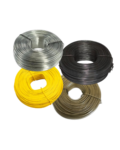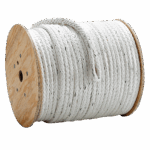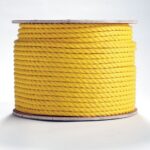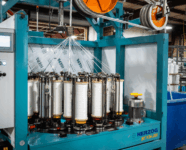The Complete Rope Materials Guide
Selecting the right rope is rarely a one-size-fits-all decision. Professionals recognize that material choice has a direct impact on performance, safety, and service life. The right fiber and construction can mean the difference between a rope that performs reliably for years versus one that prematurely fails under load or environmental stress.
At Erin Rope Corporation, we work with a wide spectrum of materials and constructions to serve industries where precision matters. This guide takes an in-depth look at both natural and synthetic fibers, wire rope products, and how each performs in real-world conditions.
Natural Rope Materials
Natural fiber ropes have been utilized for centuries and remain in high demand today due to their traditional aesthetics, biodegradability, and tactile handling features. While not as durable as synthetics, they still have well-defined roles in landscaping, decorative, agricultural, and select marine applications.
Cotton
Cotton is one of the oldest fibers used in rope manufacturing. Its primary advantages are softness, flexibility, and knot stability, making it ideal for indoor use or any application where the rope will be frequently handled. It holds knots well without slipping and has a clean, natural appearance.
However, cotton rope absorbs water readily. In humid or wet environments, it swells, loses strength, and becomes prone to mold and mildew. For that reason, cotton is not recommended for outdoor or load-bearing use.
- Best Applications: Interior decoration, pet toys, sash cords, craft, and utility use, where comfort and appearance are priorities.
- Featured Cotton Product: Solid Braid Cotton Sash Cord

Solid Braid Cotton Sash Cord is manufactured with a 12-carrier, polished cotton solid braid and a synthetic-reinforced core for strength and longevity. Its smooth texture and refined appearance make it ideal for functional and decorative applications, including crafting, tying, and light-duty bundling.
Available in 100 ft. hanks, 1000 ft. spools, and 1200 ft. spools.
Manila
Manila, made from abaca fibers, is the strongest of all natural rope materials. It offers good abrasion resistance, grips well on capstans and winches, and maintains usability even in saltwater environments. Unlike synthetics, manila doesn’t snap violently when it fails under overload; it frays and weakens gradually, providing a margin of safety.
One unique property of manila is that it contracts slightly when wet, which can improve knot security. However, it still degrades over time under UV exposure and prolonged moisture, eventually becoming stiff and brittle if left outdoors for long periods without maintenance.
- Best Applications: Rigging, landscaping, utility handlines, decorative barriers.
- Featured Manila Product: 3-Strand Twisted Natural Fiber Manila Rope.
Our 3 Strand Twisted Natural Fiber Manila Rope is made from high-quality abaca fiber, offering superior strength and durability.
This premium-grade, natural fiber rope is available in diameters up to 3 inches, with breaking strengths exceeding 57,000 lb for heavy-duty use.

Sisal
Sisal, sourced from agave fibers, is a tough, stiff, and naturally UV-resistant rope material. It holds knots securely and has excellent surface grip, making it useful in agriculture, gardening, and utility bundling. The downside is its coarse texture, which can be abrasive on the hands. Like all natural fibers, sisal will degrade over time outdoors.
- Best Applications: Agriculture, gardening, fencing, scratch posts, and temporary bundling.
- Featured Sisal Product: 3 Strand Twisted Sisal
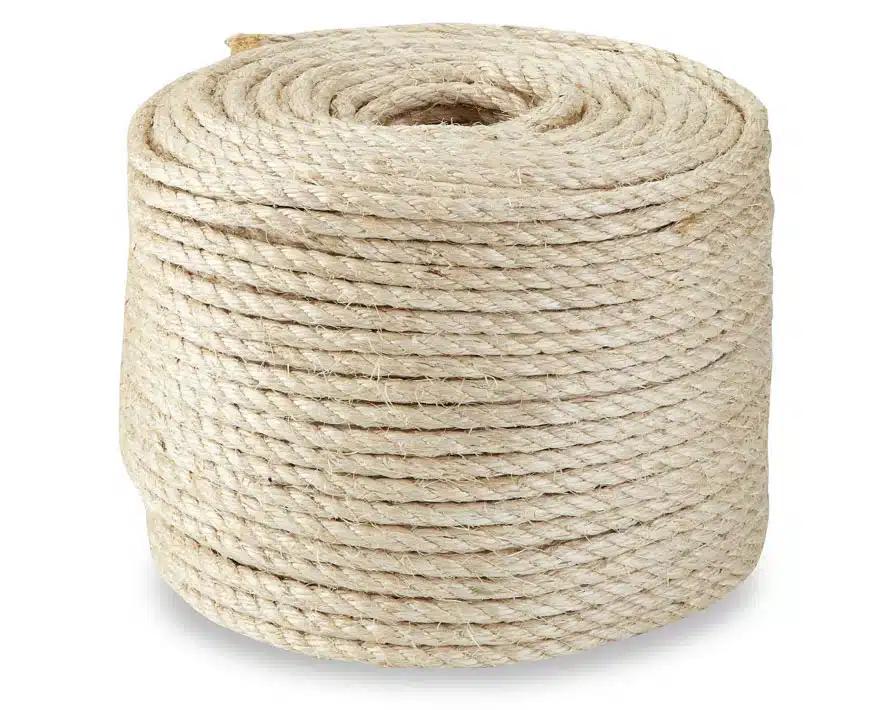
Our 3 Strand Twisted Sisal rope is a natural, biodegradable option ideal for various indoor and outdoor applications.
The coarse texture provides a reliable grip, and its eco-friendly nature makes it a popular choice for projects where sustainability is a priority.
Synthetic Rope Materials
Synthetic fibers dominate modern industries due to their superior strength, consistency, and environmental resistance. They’re engineered for specific performance properties, including elasticity, minimal stretch, and buoyancy. Here’s a breakdown of the top synthetic rope materials and our current offerings at Erin Rope.
Nylon
Nylon is one of the most versatile and widely used synthetic fibers. It offers:
- Exceptional tensile strength
- Excellent elasticity, allowing it to absorb shock loads
- High abrasion resistance
- Good chemical and mildew resistance
Nylon’s elasticity makes it ideal for dynamic applications where loads are not constant, such as towing, lifting, and mooring. One important consideration is that nylon loses around 15–25% of its strength when wet, although it still outperforms natural fibers under those conditions. Over long periods, damp nylon can stiffen slightly.
- Best Applications: Tow ropes, winch lines, mooring lines, industrial lifting, and any application requiring controlled stretch to absorb impact forces.
- Featured Nylon Product: 3-Strand White Nylon Rope
Our 3-Strand Twisted White Nylon Rope is crafted from one of the strongest synthetic fibers, delivering an exceptional balance of strength, elasticity, and durability.
Available in diameters 1/4 – 2in, and lengths up to 1200ft. Custom lengths are available upon request.
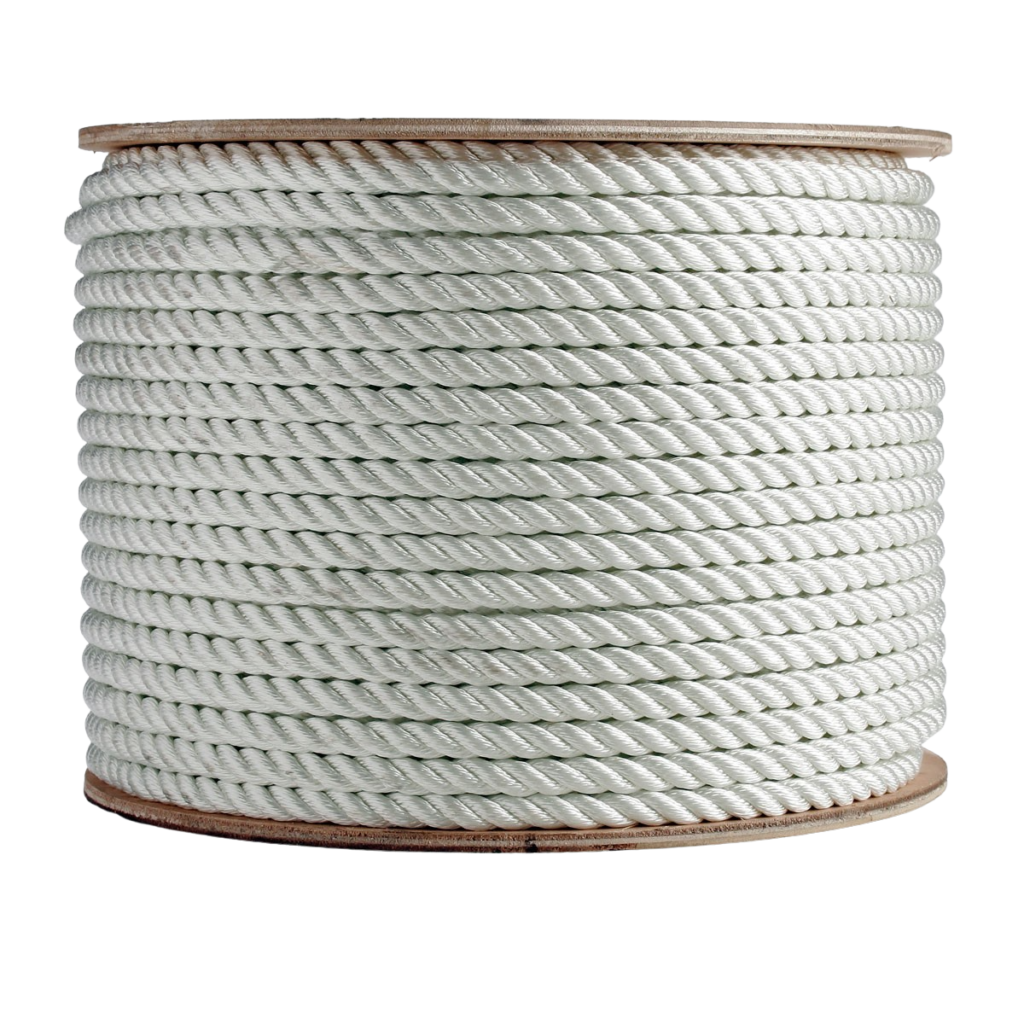
Polyester
Polyester offers similar tensile strength to nylon but with minimal elongation, making it better for static loads or situations where precise positioning is required. It maintains its strength when wet, has excellent UV resistance, and resists abrasion and most chemicals.
Because of its stability, polyester is preferred for rigging, mooring, and industrial lines where stretch could compromise safety or efficiency.
- Best Applications: Rigging, static lines, guy lines, industrial pulling, and any environment with long-term UV exposure.
- Featured Polyester Product: Composite Double Braid Pulling Rope

Our Composite Double Braid Pulling Rope is the preferred choice for demanding pulling applications.
Manufactured in the USA, this high-strength polyester rope is engineered for use with high-strength cable pullers, offering superior performance in utility and industrial environments.
Each rope has factory-spliced pulling eyes at both ends, enhancing ease of use and reliability. Custom continuous lengths are available upon request.
Polypropylene
Polypropylene is valued for being lightweight and buoyant, making it ideal for water-related uses. It is highly resistant to mildew, rot, and many chemicals, and it can be manufactured in bright colors for visibility.
However, it has lower abrasion resistance and limited UV stability, which can shorten its service life outdoors. It also has a slick surface that makes it less secure for knotting compared to nylon or polyester.
- Featured Polypropylene Product: 3-Strand Twisted Yellow Polypropylene Rope
Our 3-strand twisted yellow polypropylene rope is lightweight, durable, and versatile, suitable for various applications.
Available in a variety of sizes, strengths, lengths, and other high-visibility colors like red, white, cobalt blue, and even tan/manila blends.
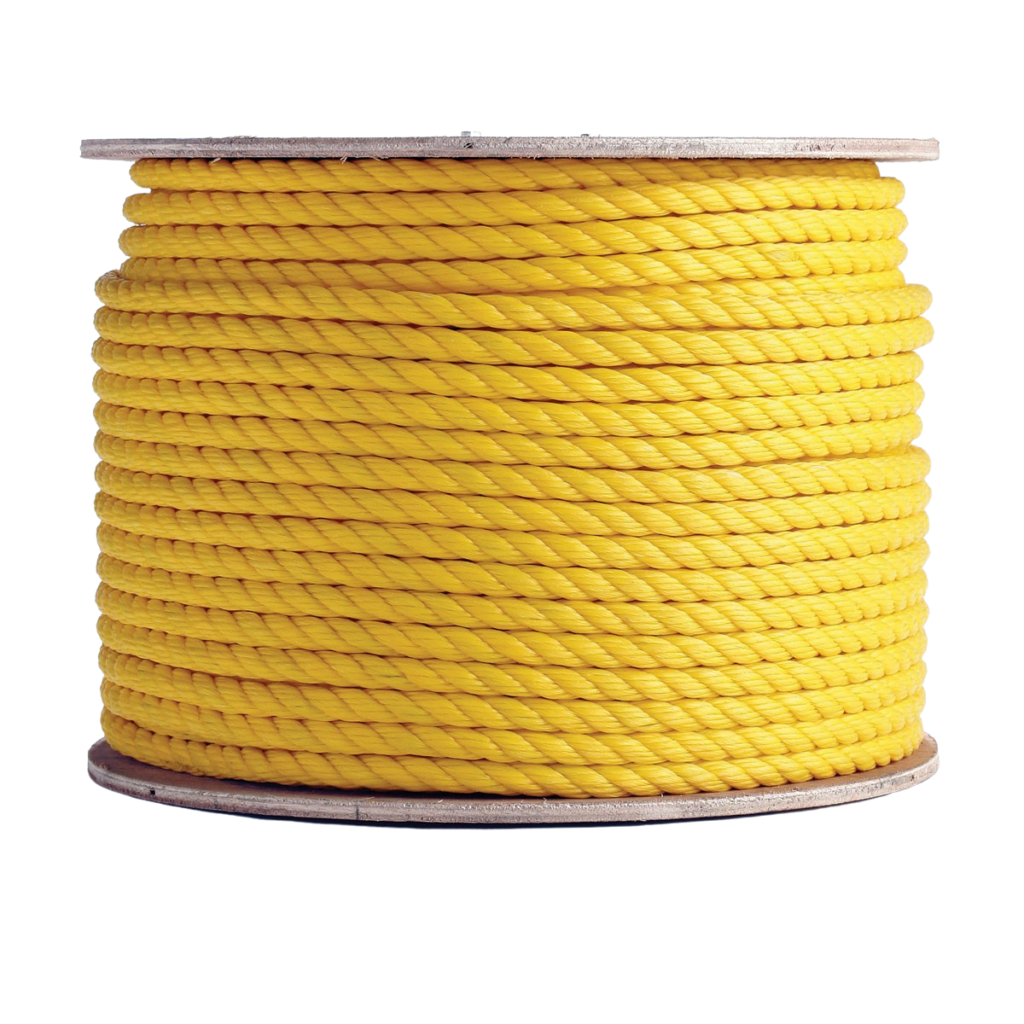
UHMWPE (High-Modulus Polyethylene)
Ultra-high-molecular-weight polyethylene fibers, commonly known by brand names like Dyneema® or Spectra®, offer the highest strength-to-weight ratio of any rope material. These ropes are stronger than steel by weight, have extremely low stretch, and are buoyant in water. They’re also resistant to chemicals and abrasion.
- Best Applications: Heavy-duty conduit pulling, offshore mooring, winch lines, aerospace, and defense applications where maximum strength with minimal weight is critical.
- Featured UHMWPE Product: E/R 12-Strand Pulling Rope
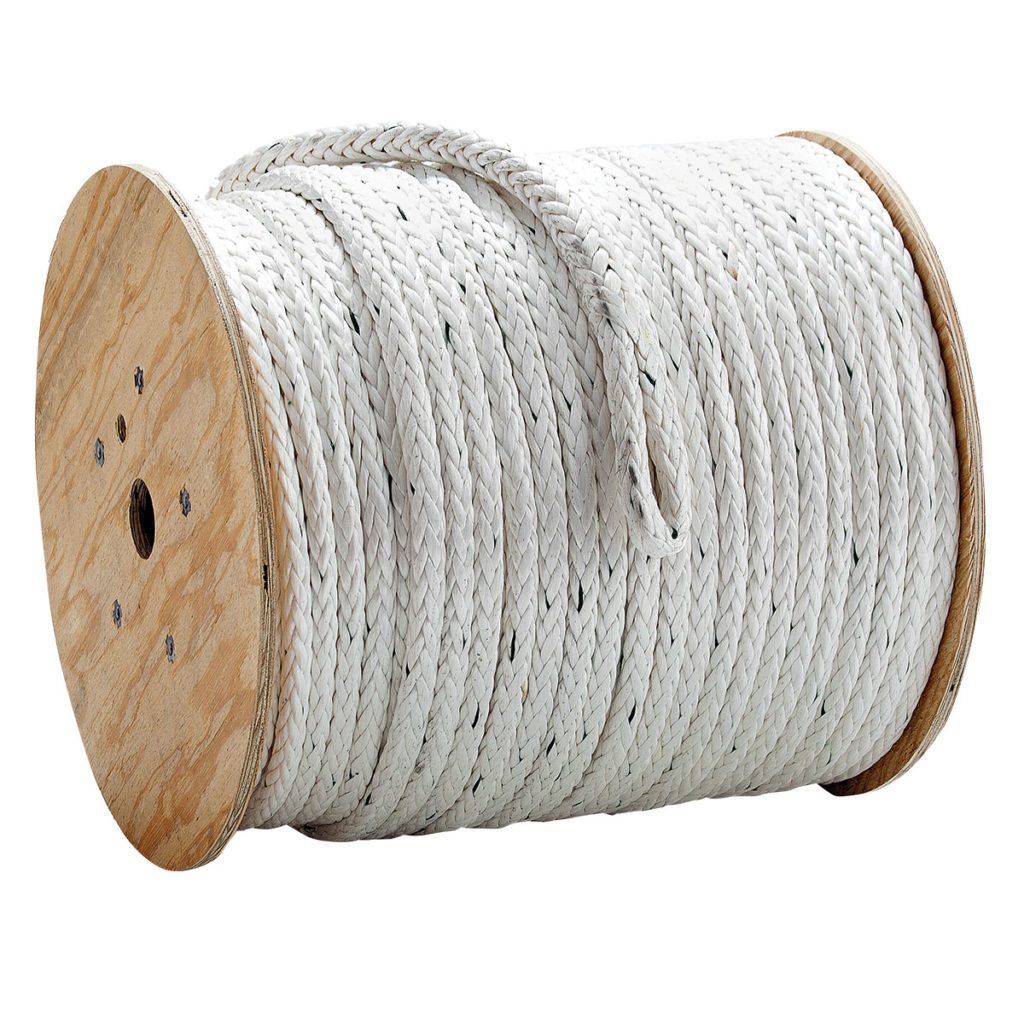
Our E/R 12 Strand is a high-performance, low-stretch pulling rope manufactured from Ultra High Molecular Weight Polyethylene Fiber (UHMWPE).
Designed for demanding overhead and underground cable-pulling applications, this synthetic rope offers an exceptional strength-to-weight ratio, weather resistance, and ease of handling. With spliced pulling eyes and a durable 12-strand construction, it’s built for repeat use in the most demanding environments.
Cable and Wire
When fiber ropes can’t meet the strength and durability requirements of a job, wire rope and cable provide a high-tensile, low-stretch alternative. Constructed from multiple steel wires laid into strands around a core, wire rope delivers exceptional load capacity, long service life, and reliable performance in demanding environments. The result is a product capable of handling lifting, rigging, and structural applications where traditional ropes cannot meet required safety margins.
- Best Applications: Heavy lifting, crane and hoist operations, architectural rigging, perimeter and safety lines, industrial winch cables, and structural support in construction or utility environments.
- Featured Cable & Wire Product: Galvanized Aircraft Cable
Our Galvanized Aircraft Cable is a versatile wire rope available in 7×7 and 7×19 constructions, ideal for rigging, winch lines, utility work, and general outdoor applications where dependable strength and moderate corrosion resistance are required.
Manufactured to meet RR-W-410G and MIL-W-83420D specifications, this cable provides consistent performance under demanding conditions.
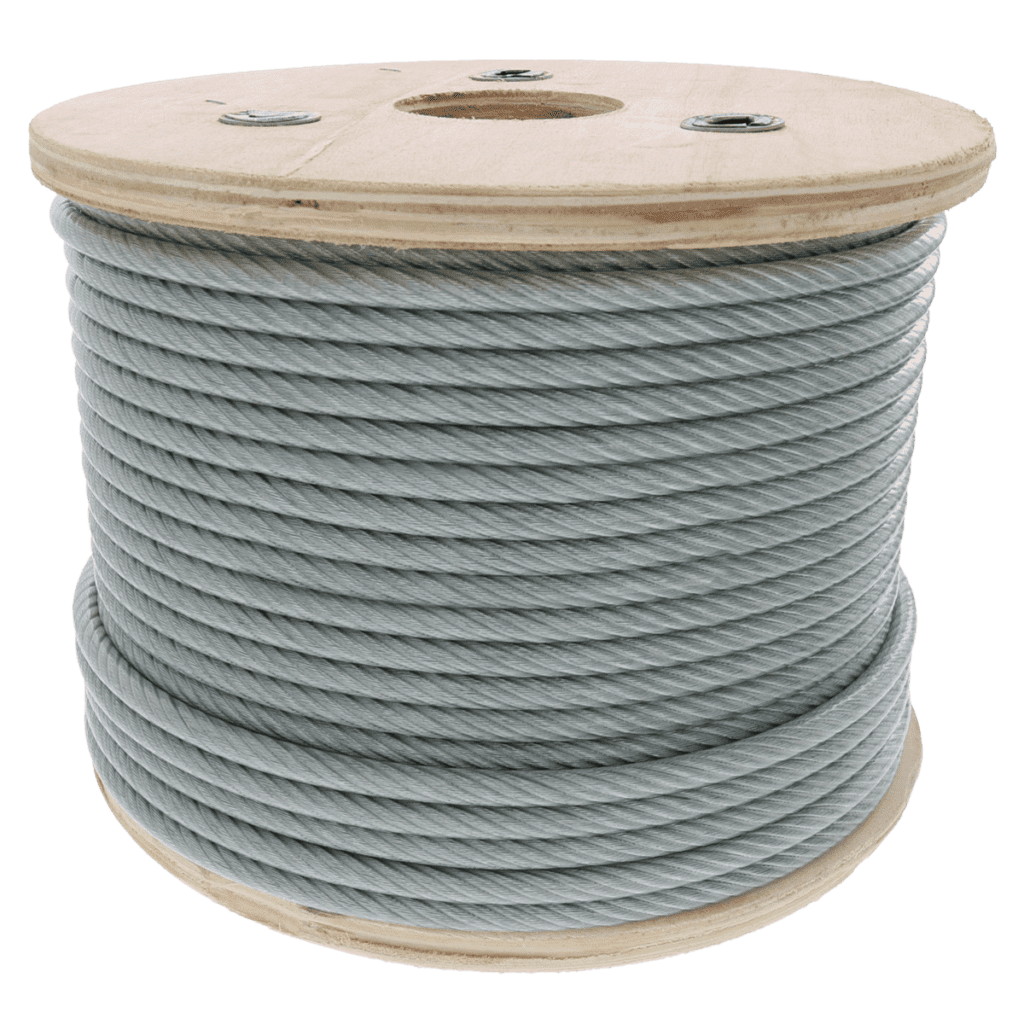
Rope Construction Considerations
Fiber choice is only part of the equation. Rope construction also impacts strength, flexibility, handling, and wear characteristics. Here are other construction considerations when choosing your rope:
- Twisted (3-Strand): Traditional, economical, strong, and easy to splice. Suitable for both natural and synthetic fibers.
- Single Braid (Hollow Braid): Flexible, resists kinking, lightweight, ideal for general handling and floating applications.
- Double Braid: A braided core inside a braided cover. Provides excellent strength, improved abrasion resistance, and better handling for industrial use.
- 12-Strand: High strength-to-weight ratio, minimal stretch, and easy to inspect. The preferred choice for heavy pulling and high-load operations.
Erin Rope manufactures and supplies all major constructions, ensuring the right balance of load performance, abrasion resistance, and handling for each fiber type.
How to Choose the Right Rope
When selecting a rope for professional use, ask these questions:
- What is the nature of the load? Dynamic loads benefit from nylon’s stretch; static loads require polyester.
- What environment will it be used in? Constant UV or saltwater exposure demands polyester or UHMWPE.
- Do you need buoyancy? Polypropylene or UHMWPE are ideal for floating applications.
- How will the rope be terminated? Knots, splices, or hardware may determine whether you choose a fiber with better knot-holding characteristics.
- What’s the expected service life? Heavier initial investment in higher-performance fibers often reduces total lifecycle cost.
Trusted Rope Solutions from Erin Rope Corporation
Professionals rely on Erin Rope for high-quality ropes that meet rigorous industry specifications. From natural fibers for traditional applications to advanced synthetics for high-load industrial environments, we provide materials you can trust, in the constructions you need, supported by five-star customer service.
Browse our full catalog for technical data on each product, or contact our team for application-specific guidance. Whether you need bulk supply, pre-spliced assemblies, or specialized pulling lines, we deliver solutions engineered for your industry.

